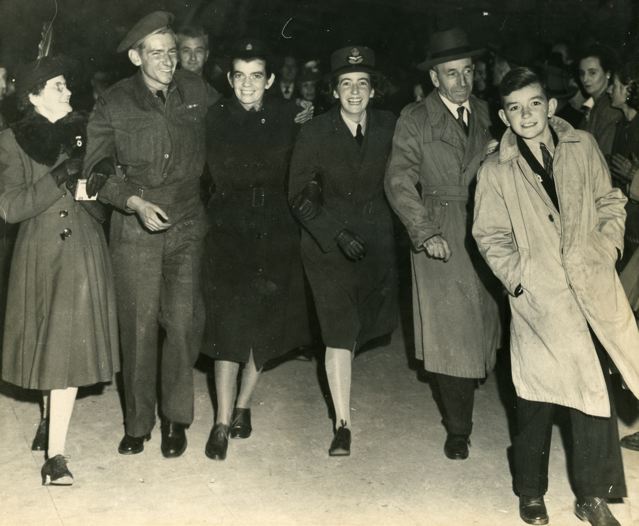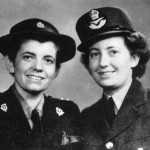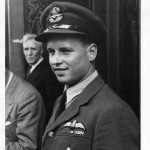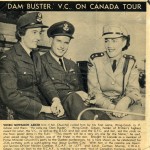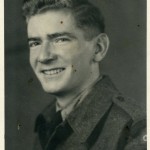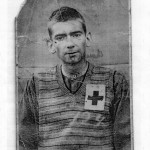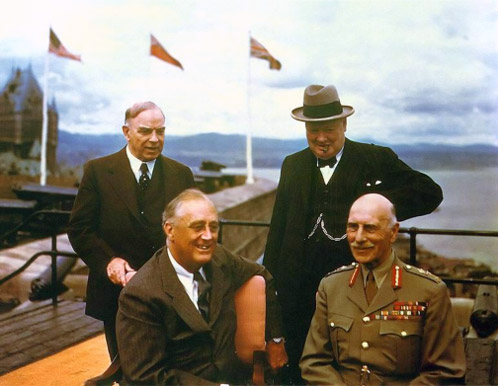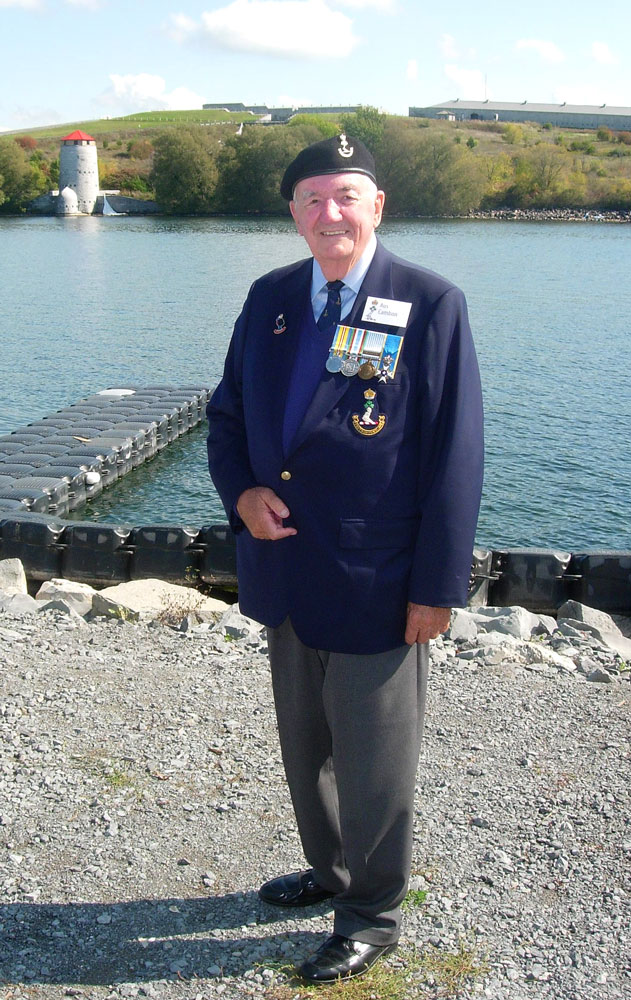
“I Remember …”
Reflections on growing up in Quebec City during WWII with a brother facing an
uncertain fate in a Japanese P.O.W. camp, two sisters serving overseas and both
parents contributing to the war effort. A Remembrance Day tribute to one special
family and to all WWII veterans and their families. #3201Austen (Aus) Cambon
I was a kid in public school when the Second World War broke out. In what seemed to be a very short time indeed my father was forced into retirement from his lengthy career in the military and like so many others he went to work in a munitions factory, my under-age brother joined the Canadian Army and he and my two sisters all headed overseas in military uniforms. It would be five years before I would see my siblings all back together in our family. That moment was one I came to know to be a truly miraculous occasion.
Many of us know the Hon. John Matheson, H17417 Class of 1936, former Parliamentary Secretary to Prime Minister Lester B. Pearson, an Ontario MPP, a judge, and perhaps best known for being principally involved in the evolution of our new Canadian flag. A great Canadian. I have had the honour and pleasure of visiting John occasionally in recent years. He has said to me a number of times that my family is “the quintessential military family of Canada”. Neat, but I think a far too-generous assessment, made perhaps because he has reason to remember my sister “Bunny” (see later on).
Our family was certainly special to me, but there were many other families just like ours, even in our own neighbourhood in Quebec City. John’s kind comment got me reflecting about the extraordinary contributions and sacrifices so many veterans of WWII made to give us the freedom we enjoy today. With Remembrance Day 2011 at hand the number of those veterans who are still with us is dwindling rapidly. I will remember them.
My mother was born into a military family in Belfast, Ireland. She went to school in Barbados where my grandfather commanded the British Garrison based in Bridgetown. My father, born in Scotland, emigrated to Canada and served as a bandsman in 1RCHA in Kingston before transferring to the Royal Canadian Garrison Artillery, a military unit that would later become the famed Royal 22nd Regiment based at The Citadel in Quebec. My parents married in Kingston in 1917 but my siblings and I were all born in Quebec City.
The “Van Doos” regimental band was in those days world-renowned. In March, 1927, when Calvin Coolidge was President, the band played at a military event at Arlington in Washington. In May, 1937, they played at the coronation of King George VI in London. While Dad was serving at The Citadel in Quebec his Commanding Officer for a time was Lieutenant-Colonel Georges Vanier who would later become the 19th Governor General of Canada. Another great Canadian. He made a point of visiting the families of his soldiers, including our home. Dad also played in the Quebec Symphony Orchestra for a number of years. I remember helping him glue replacement pads onto his wind instruments (saxophone, oboe, and clarinet) and listening to him practise his scales while I played ball hockey on the street below.
When Canada declared war on the Nazi Third Reich in September, 1939, my oldest sister Margery (“Bunny”), then a very recent nursing graduate of Jeffrey Hale Hospital in Quebec, enrolled in the Canadian Army as a Nursing Sister and was amongst the very first of many
Canadians to head overseas. Serving in England for the duration of the war, Bunny was a member of the world’s first plastic surgery team caring for the terribly-burned victims of German bombing raids. When the team was honoured with a special service medal for its unique and valued contribution to the war effort, Bunny was asked to attend the investiture at Buckingham Palace with the team leader. She was thrilled to meet and speak with King George VI and Queen Elizabeth.
Bunny and John Matheson were high school classmates in Quebec City. During the war they would meet up overseas in a most coincidental way. John was seriously wounded by enemy shrapnel. When he was shipped back from the front for treatment, it happened that he arrived in the very hospital where Bunny would be one of his nurses. He likes to refer to her as “an angel”. I have no difficulty with his assessment in this case!
At the start of the war my brother Ken had just graduated from high school and was working for the summer in a local soda fountain shop. One day he broke a coffee pot and discovered that the resulting deduction from his wages reduced his pay for the week to close to zero. On his way home a recruiting sign on the Quebec Armoury building was enough of a motivation. He lied about his age, only 16 at the time, and joined the Royal Rifles of Canada. After training for Arctic warfare in Newfoundland and New Brunswick, he found himself on board a ship that sailed out of Vancouver in October, 1941 bound for Hong Kong to help defend the British Garrison against an anticipated invasion by Japan.
Ken, a rifleman, was among the 1,975 Canadians who fought in the Battle of Hong Kong. They were the first Canadian troops to be engaged in battle in WWII. The Japanese attacked Hong Kong on December 8th almost coincidentally with their attack on Pearl Harbour. The 17-day battle was fierce. After a valiant effort and a huge loss of life the Canadians were forced to surrender on Christmas Day, 1941. The death toll and their hardship did not end with the surrender. The survivors became prisoners of the Japanese for 44 months in Hong Kong and Japan. It was many months before we learned whether Ken had survived the battle, or not. Miraculously, he did survive. Many did not. Nearly 300 Canadians died in that battle. Almost as many died later in the prison camps.
When Hong Kong fell to the Japanese, my sister Noreen, abandoned her nursing training and joined the Royal Canadian Air Force. Noreen worked mostly in a then highly-secret new field: radar. She served overseas and in Newfoundland and rose in rank to become a Flight Lieutenant. When Wing Commander Guy Gibson, VC, of “The Dambusters” fame, came to Canada with Prime Minister Winston Churchill’s party for one of the Quebec Conferences, Noreen was assigned to be his escort for a tour of the city. One of the many photos of her with W/C Gibson, showing them riding in a caleche, appeared on the front page of the “Star Weekly”, a magazine that I very proudly delivered to my customers that week.
With my sisters and brother overseas, my father working in a munitions factory at Valcartier, and my mother serving in the Women’s Volunteer Reserve Corps (W.V.R.C.), I knew enough to pay attention to the news broadcasts we listened to three or four times every day. Quiet was mandatory while the CBC’s Matthew Halton reported on the war. Hong Kong was rarely if ever mentioned until much later on.
As a youngster, I did not sense that we had any significant difficulties during the war. We had rationing but our neighbourhood corner grocer always seemed to have the sugar, butter, or calf liver I was sent to pick up, ration coupons in hand.
As kids we had good times in school, we enjoyed basketball and bean suppers at the “Y” and we spent our summers playing softball and attending the “Y” camp. In winter we skated every night on outdoor rinks. We played hockey endlessly. We skiied on the Plains of Abraham.
I remember very well being encouraged to eat everything on my plate at every meal and being gently reminded that my brother would no doubt love to be able to eat what I was inclined to leave.
Reports that German U-boats had been sighted in the St. Lawrence provided excitement but no concern. The war was “away over there, somewhere”, not here in Canada.
Security was certainly not a big issue. I remember when Prime Minister Winston Churchill and President Franklin D. Roosevelt came to Quebec in August, 1943 for the first of their two Quebec Conferences, more than a few us ran alongside their cars for many blocks as they drove down rue Grande Allee toward The Citadel. We would also frequently head up to the moat around The Citadel to see and even talk with the German P.O.W.’s who were confined there.
Many of my friends and I had a common bond: we had family away at war. Some lost family members in battle. Some of us waited and waited for news about the P.O.W.’s in Japan. We heard nothing. The war raged on in Europe and in the Pacific.
Finally, hope. On May 7, 1945, we celebrated V-E Day (Victory in Europe Day), the date when the World War II Allies formally accepted the unconditional surrender of the armed forces of Nazi Germany and the end of Adolf Hitler’s Third Reich. However, our celebration was muted. The war in the Pacific would continue for three more months.
On August 6, 1945, the U.S. dropped the first of the two atomic bombs that would end the war, this one on the city of Hiroshima. Three days later the second bomb was dropped on Nagasaki. The alternative target for that bomb, if Nagasaki had been unavailable due to weather, was Niigata where Ken was confined as a P.O.W.
The surrender of Japan on the afternoon of August 15, 1945, (V-J Day) ended World War II. This time we really celebrated. I remember riding around in Breakeyville outside Quebec City in an old Ford filled to capacity with a group of friends. We made more than our share of noise. Still, we knew only that the war was over. What about the P.O.W.’s ?
Eventually, the telegram arrived. “He’s alive !!! …he’s free !!!” The atrocities ceased. The surviving heroes of the Battle of Hong Kong made their way home by ship and by train.
All of our family waited anxiously for Ken’s arrival at the railway station in Quebec City and there he was … skinny, but alive. We were together, a family once again. A miracle!
We linked arms and marched together through the cheering crowd. Next day the Montreal Gazette splashed a photo depicting that glorious and memorable moment across the front page of the morning edition. Ken had been a delivery boy for the Gazette. The former circulation manager, now the publisher, travelled on the train with Ken from Montreal to Quebec and persuaded him to get on with his education a.s.a.p.
Ken soon enrolled at McGill where he met and married a wonderful classmate, Eileen Nason, while they were both studying medicine. They made history as the first married couple ever to graduate in McGill’s Faculty of Medicine. Together they raised two daughters. Ken and Eileen worked together as medical specialists in Vancouver. Ken became a highly-respected physician and surgeon and Professor Emeritus, University of British Columbia. Eileen’s achievements included being President of the Federation of Medical Women of Canada and being presented with an Honorary Doctor of Science Degree by the University of New Brunswick.
Ken eventually wrote about his wartime experiences in his book “Guest of Hirohito” which was translated later on into Japanese and Chinese. He travelled to Japan and China as an author, a title he cherished. He donated all proceeds from his book to the Hong Kong Veterans Association. The book can be found in the RMC Library, or, Google “Kenneth Cambon Hirohito” to reach an online version on a Marines website: http://fourthmarinesband.com/cambon.htm .
While in England Bunny married one of her patients who had been wounded in Holland. When they returned after the war they raised a family of four children. Bunny continued her nursing career, nursing for a total of 38 years. Bunny and her husband, John Quail, were treated like VIP’s when they attended the 60th Anniversary of VE-Day celebrations at Apeldoorn in the Netherlands. They deserved it. The Dutch will never forget the role Canadians played in their liberation.
After the war, Noreen resumed her nursing training. Upon graduation as an RN she joined the Canadian Army as a Nursing Sister and enjoyed a distinguished career until retirement. She then continued to make good use of her valued experience working for the Registered Nurses Association of British Columbia.
Long after the war Bunny and Ken were able to marvel at an experience they shared. While in England in 1944, Bunny wrote to Ken on a P.O.W. Letter Form that we all had to use, including in her note a birthday greeting for him. The Japanese never gave the prisoners their mail. Ken received that letter in June, 1991 and called Bunny to thank her for her greetings but he complained to her about the tardiness in its delivery: 44 years! As it happened, a collector of war memorabilia had purchased the letter from a collector in Boston. He remembered seeing Ken’s name in the American Legion’s magazine as the author of his book. He tracked Ken down and sent him Bunny’s letter.
In recent years I have attended several National Conferences of the Hong Kong Veterans Commemorative Association (HKVCA). The organization is now maintained by the families of the Hong Kong veterans. On August 15 annually, the anniversary of their liberation, they meet in a ceremony of remembrance for their fallen comrades, a very moving occasion indeed. This year at Granby, Quebec, only 8 of the 88 surviving veterans of the Battle of Hong Kong were able to attend this memorial event. I will remember them.
I will remember Bunny, Noreen, and Ken who are no longer with us. My memories of them will remain with me forever.
I will remember the sacrifices, the challenges and the worries my parents faced as the parents of children who went overseas in WWII.
I will remember to be forever grateful that my siblings all returned from that war.
I will remember that many did not return.
I will remember the families of WWII veterans.
I will remember them. LEST WE FORGET.
_________________________________________________________________________________
About the Author
#3201 Austen (Aus) Cambon, rmc
After graduation in 1954, Austen served as an artillery officer in 3RCHA, First Commonwealth Division, United Nations Forces, Korea. Upon leaving the forces in 1957 he enjoyed a long career managing industrial enterprises. He is a Knight of the Royal Order of the Northern Star, an honour conferred on him by the King of Sweden. Since retiring from the corporate world, being a management consultant and becoming a widower, Austen has been teaching business in universities and colleges in Canada, USA, China and Lebanon, winning several teaching awards in Canada and abroad. He is currently teaching international students in The Business School at the Humber Institute of Technology and Advanced Learning in Toronto.



